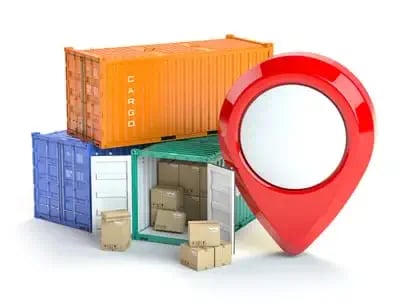
As a fleet manager, you either use an automatic vehicle location (AVL) system as a tool in your fleet management utility belt, or if you don’t, you are at least generally aware of what such systems are about.
Regardless, it would benefit all to go over how an AVL system can help optimize your fleet’s operation. Even if you already use one, the odds are you may not be using it to its full potential. And if you’re pondering whether such a system makes sense for your company, then you have come to the right place.
Today’s piece will examine how an AVL system (also called a “GPS system”) enhances a fleet’s operation. It is important to note that this series will cover the benefits of a fleet management system in general. If you zoomed in on specific industries, you would see that each sector has its own application of AVL technology and a set of benefits from using such systems.
The value added by an automatic vehicle location system includes:
- Increased efficiency and productivity
- Lowered costs
- Increased safety
- Better cost tracking
- Enhanced service
Please note that although the terms “fleet management system”, “AVL system”, and “GPS system” can refer to somewhat different ideas and products, they have generally become synonyms when discussing fleet management. We will therefore use them interchangeably moving forward.
AVL Systems in Fleet Management: Efficiency & Productivity
The goal of fleet management for any company is to get the most out of the vehicles and equipment they own and operate. Increased productivity and overall safety for vehicle drivers and equipment operators are typically strongly correlated with maximizing the efficiency of any organization's assets. Here are some ways in which an AVL system can increase productivity and efficiency in a fleet operation.
Real-time tracking of assets: one of the commonly well-known benefits of an AVL system is the ability to track your fleet’s assets in real time. No need to call and follow up with the drivers yourself. Load up a dashboard with a map, and you can see where everyone is, where they have been, etc.
Routing: beyond seeing where assets are and where they have been, a fleet management system can also plan optimal routes for each unit based on the different places it needs to be and traffic conditions, changes in the planned stops, etc. Such changes can be forwarded directly and automatically to each driver, thus minimizing the chances of important updates being lost along the way.
Better performance: Fleet assets can be expensive to own and manage, especially when upkeep and storage are considered. As a result, fleet managers must understand how each asset is doing relative to its capacity. Certain AVL systems can give fleets visibility on asset use, allowing managers to gain important insights. By shifting relatively idle/underutilized assets to areas where demand is stronger, fleets can improve asset ratios and potentially enhance income.
Telematics: beyond GPS-based data and functionality, an AVL system will typically also capture engine data crucial to the maintenance of the vehicle or equipment: mileage, engine hours, idle time, fault codes (“check engine” light), etc. Such data is crucial to the longevity of the unit and the security of employees and others on the road. Capturing that data manually is not only time-consuming but also very much prone to human error, which leads to more time wasted chasing down and correcting those errors.
Smoother operation: closely related to automated telematics capture is the idea of fewer breakdowns. As automated engine data capture enables fleets to implement preventive maintenance plans in a timely manner, the number of unplanned interruptions caused by equipment breakdowns decreases significantly. What you get are productive assets that work when they are supposed to.
AVL Systems Lower Costs
AVL systems play a significant role in the security of drivers, equipment operators, and other road users. It all boils down to the way telematic data is used. As previously mentioned, a fleet management system will typically capture engine data: odometer value, engine hours, idle time, etc. This data can then be used to update maintenance plans and issue timely maintenance work orders. Better systems will handle all of that automatically. Properly implemented preventive maintenance reduces costs for fleets in two ways.
Fewer vehicle & equipment breakdowns: If inspections and preventive maintenance work are not done when they are supposed to, breakdowns and unplanned interruptions in a fleet’s operation are inevitable. Because of technological advancements, preventive maintenance may save fleets money by alerting them to possible problems before they become costly ones. Telematic data is used to keep vehicles and equipment running smoothly in between planned maintenance visits and avert imminent part and system problems. Timely maintenance can be the difference between paying a few dollars to replace a part and paying hundreds more to tow a broken-down unit to another shop and paying someone else to replace the same part—as well as repair anything else that may have been affected by the breakdown.
And all of that only addresses the costs directly associated with the breakdown itself. Let’s not forget that there is an interruption in that vehicle’s service which will necessitate dispatching another unit to replace it and extra time to play catchup.
Lower insurance premiums: Insurance companies like GPS tracking because it encourages people to drive more safely. Reductions in premiums of up to 15% on insurance premiums are given to companies that use tracking software. In fact, some insurers may even pay for you to equip your fleet with AVL equipment. Here are some reasons why:
- Vehicle theft claims are less likely to be filed: most of us understand how GPS tracking can aid in stolen asset recovery. It might take weeks for authorities to track down stolen assets without GPS tracking. The vehicle is frequently never recovered, and the insurance company pays a hefty claim. This is why so many insurance companies provide discounts for anti-theft and GPS devices.
- Better driving: drivers who are aware that they are being tracked by GPS monitoring devices are more cautious. Insurance companies receive data on speeding, fast acceleration, forceful braking, severe turning, etc. Using this information to train your drivers on safer driving habits lowers insurance and fuel expenses.
- Fewer misuses of fleet assets: employees are discouraged from using corporate vehicles for personal reasons thanks to AVL systems. Insurers understand that the more a vehicle is driven, the more likely it is to be involved in an accident. Again, this beneficial impact reduces insurance and gasoline expenses.
- Fewer accidents: As previously mentioned, the telematics data provided by an AVL system helps optimize the maintenance of a fleet’s assets. Well-maintained vehicles are less likely to get into accidents, which insurance companies love because they get to save money.
Increased Safety
Just as significant as decreased costs, if not more important, is the increase in overall safety upon implementation of AVL in your fleet management repertoire. When considering all types of costs, monetary or otherwise, making safety a priority will very often translate to lower costs at the end of the day: fewer accidents and breakdowns, lower insurance premiums, lower liability, etc.
Fewer accidents: once again, we return to the importance of properly maintaining your fleet’s assets. An AVL system’s telematics data feeding a preventive maintenance program will significantly decrease the number of breakdowns, some of which can lead to accidents on the road. To state the obvious, accidents endanger all users of the road: your drivers and operators, as well as non-employees that happen to be in the area.
Safer driving habits: the idea of improving driver behavior goes hand in hand with preventing incidents in the field. Speeding, quick accelerations, sudden stops—it’s not just about how the vehicle is treated. How users share the road greatly affects the likelihood of severe, safety-compromising incidents.
Validation of user qualification: to state the obvious, when it comes to specialized equipment, such as a crane or an excavator, you will always want qualified personnel behind the wheel. An AVL vehicle module equipped with a driver ID peripheral (such as a proximity reader to read employee cards) can validate a user’s qualifications and alert you when there is a mismatch with the vehicle/equipment. Systems can even prevent the engine from starting if a qualified operator has not been identified first.
Deployment control: an advanced, fully integrated fleet management system can make sure that a unit can’t even leave the yard unless:
- A qualified operator will use it; this is done, as previously described, through the use of onboard ID validation peripherals.
- It has no open work order for critical maintenance work. This can be achieved when the AVL aspect of a platform is fully integrated with maintenance management and yard access control.
Better Cost Tracking
Data captured by a fleet management system can be invaluable when determining the cost of each project and estimating the cost of subsequent projects, which goes well beyond materials and labor. A well-rounded system will provide data on the following:
- Fuel consumption: volumes dispensed, fuel consumed on the road vs off-road, etc.
- Engine hours spent on different types of jobs
For accurate profit and loss reporting, actual operational data provided by an AVL system may be effectively coupled with financial data. You are thus able to better estimate the cost for each type of job.
If you are the type to generously pad your figures because you only have a nebulous idea of what your costs are on top of wanting to mitigate any unplanned expenses, there is a real opportunity to significantly increase your competitiveness when having to bid for projects and contracts. By removing a significant amount of the cost-related guesswork, the total amount you end up putting in your proposals will be a lot closer to what it needs to be.
Conversely, if you like to ride the edge of profitability when bidding on a project or contract and only have a vague idea of what you typically spend, an AVL system will provide precious data that will enable you to price everything in a profitable manner—or to steer clear of projects that aren’t worthwhile for you.
Better Service
Customer service improves when your fleet is tracked in real-time. And providing superior service to your clients puts you ahead of the competition and, as a result, boosts your bottom line. Here are some ways in which an AVL system will enhance the service you provide to your clients.
- Provide clients with speedier response times by locating and deploying the nearest vehicle to their location.
- More efficient routing reduces the likelihood of encountering roadblocks such as delayed traffic or construction. As a result, your ETAs are more reliable.
- Keep your ETAs current by checking how far a vehicle is from a customer's location at any given time.
- Finally, enhance the client experience by making your services quicker, more responsive, and more accurate.
Customer satisfaction is a key aspect of any service firm, which is why a fleet is fundamental. When your clients are happy, you generate more revenue and have a leg up on the competition. Some of the benefits of satisfied clients include:
- Enhanced reputation
- Increased recurring business
- Increased referral business
- Increased income
Conclusion
Although a fleet management system is a major investment, this is a case where the benefits generally far outweigh the costs. Of course, that is contingent on several factors: the size of your fleet, the functionalities offered by the system being considered, and the industry in which you operate. For instance, construction companies and municipal public works departments both operate fleets, but their requirements and respective operational realities are vastly different.
Visit our home page for an overview of the SM2 platform and the power of a truly and fully integrated fleet management solution. There are also packages tailor-made for specific industries, such as construction, public works, and mining. Brochures, demos, and qualified experts are available, so please feel free to get in touch.
Subscribe to Fleeting Thought so you don’t miss future blogs on fleet-related topics such as:
- AVL/GPS systems
- Vehicle and equipment maintenance management
- Work order management
- Fuel storage tank management
- Fuel truck and transfer tank management
- Control access management.
Do you have questions or comments? Please leave them in the comments section below.
